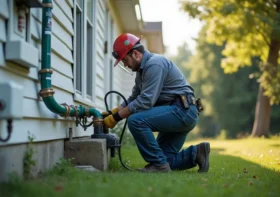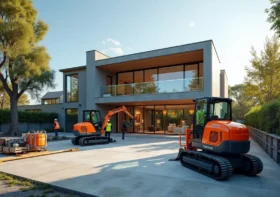The Real Costs of Home Flooring Over Time

Choosing the right flooring for your home is one of the most significant decisions when renovating or building. It is about appearance and how well the material will perform in your daily life.
The comfort, durability, and maintenance requirements all contribute to the real cost of flooring over the years. Taking a long-term view allows homeowners to see beyond the initial purchase and focus on value that lasts.
Contents
Initial Purchase vs. Lifetime Expenses
The upfront cost of flooring is only part of the equation. Carpet often appears more affordable, while laminate, vinyl, tile, or hardwood usually require a higher initial spend. For those who want to explore flooring types, it becomes clear that choices with greater durability can save money in the long run. Hardwood may last for decades with care, whereas cheaper carpet might need to be replaced much sooner, which increases costs across the years.
Extra elements like underlay, trims, and preparation work also add to overall expenses. Considering these alongside the base price gives a more realistic view of what flooring will truly cost. A thoughtful decision at the outset prevents ongoing disruption caused by frequent replacements. Professional advice from installers or retailers can help clarify which products most effectively balance style, longevity, and affordability.
When weighing flooring costs, it also helps to consider how long you plan to stay in the property. A short-term home may justify lower-cost flooring, while a long-term residence benefits more from durable materials that can be refinished or refreshed over decades.
Durability Factors That Impact Your Bottom Line
Flooring lifespans vary greatly across materials. Quality hardwood floors can last for decades with the option for refinishing. Tile offers similar longevity when properly maintained. Laminate and vinyl provide moderate lifespans, although they do not always match hardwood or tile in lasting power.
Traffic patterns matter as well. Entryways, kitchens, and hallways experience heavy use compared with bedrooms or formal living spaces. Homes with children or pets often see faster wear on surfaces. Scratches from pet claws or spill damage can shorten a floor’s lifespan. Climate conditions such as high humidity, dryness, and temperature changes influence performance.
Design preferences should not be overlooked. Flooring that complements furniture and lighting enhances the overall aesthetic, while clashing styles can make even high-quality products feel out of place. Noise reduction is another factor: carpet absorbs sound effectively, making bedrooms and lounges quieter, while hardwood or tile may require rugs or underlay to soften echo in larger rooms.
Maintenance Requirements and Costs
Different flooring types come with varying upkeep needs. Hardwood requires occasional refinishing, while carpet benefits from deep cleaning to restore appearance. Vinyl and laminate need only simple cleaning routines, although manufacturer-recommended products help preserve protective layers. Regular care supports longer life and reduces the risk of premature replacement.
Cleaning routines should also be matched to the household schedule. Families with limited time may prefer surfaces requiring minimal care, while those who enjoy home maintenance might be more comfortable with options requiring occasional refinishing.
Safety features can add hidden value too. Non-slip finishes or textured surfaces in bathrooms and kitchens help reduce the risk of falls, making certain products more practical for households with elderly residents or young children.
Replacement Cycles and Renovation Realities
Carpet usually requires frequent replacement, while vinyl and laminate provide a moderate lifespan. Hardwood and tile often serve households for many years with regular care. Labour and disposal fees can add to costs when old flooring needs removing, and environmental considerations are increasingly relevant as disposal regulations tighten.
Partial replacement can be difficult. Matching existing flooring after years of wear is rarely perfect. This often forces whole-room replacement, even when the damage affects only a small area, which unexpectedly increases costs.
Flexibility during renovation projects is another overlooked factor. Choosing widely available flooring makes future replacements easier and ensures consistent results across different phases of home improvement.
Return on Investment When Selling Your Home
Flooring choices directly influence property value and the way potential buyers view a home. Hardwood often represents a premium upgrade, while tile and quality vinyl are also attractive. Carpet has less appeal, particularly if it shows signs of age or style datedness.
Regional preferences also matter, as climate and lifestyle influence which flooring types are most valued. Well-chosen flooring in key areas such as kitchens, bathrooms, and living rooms can boost return on investment significantly. On the other hand, outdated flooring can slow down a sale and reduce the final selling price.
Making a flooring decision is about balancing personal preference with financial practicality. A material that fits your lifestyle, climate, and maintenance habits will always provide better value. By looking at factors such as durability, upkeep, replacement cycles, and long-term appeal, homeowners can select flooring that delivers function and style for many years.



